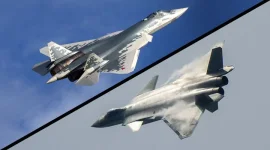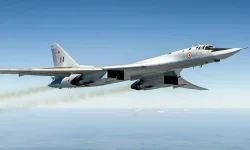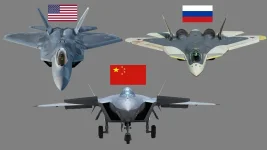- Views: 2K
- Replies: 3

The Indian Air Force (IAF) has bolstered its offensive capabilities with the addition of Joint Direct Attack Munition-Extended Range (JDAM-ER) kits, further enhancing the precision strike potential of its Tejas Mk1A light combat aircraft. This acquisition follows the integration of Israeli SPICE bombs and French AASM HAMMER, showcasing the IAF's commitment to diversifying its arsenal of guided munitions.
The JDAM-ER, a U.S.-built system, converts conventional "dumb bombs" into highly accurate weapons by adding a tail section equipped with an Inertial Navigation System (INS) and Global Positioning System (GPS) guidance. This allows the bombs to be guided to their targets with pinpoint accuracy, even in adverse weather conditions. The addition of small wings to the JDAM-ER further extends its range to over 70 kilometers, making it a valuable asset for standoff attacks.
While the JDAM-ER might be less sophisticated than other systems like SPICE and HAMMER, its affordability and proven effectiveness have made it a mainstay in modern warfare. The U.S. Navy estimates the unit cost of a JDAM kit to be approximately $24,164, significantly cheaper than its counterparts. This cost-effectiveness has led to its widespread adoption, with over 400,000 kits supplied to the U.S. military and 26 international users, including Pakistan.
However, the JDAM-ER's reliance on GPS guidance presents a vulnerability. Electronic warfare technologies, particularly GPS jamming systems being developed by countries like China, could potentially disrupt the weapon's accuracy in a conflict against technologically advanced adversaries.
In contrast, the Israeli SPICE system offers a more robust guidance solution. It combines satellite guidance with an Electro-Optical Seeker (EOS) that visually identifies and matches targets to pre-loaded images, providing accuracy even when GPS signals are compromised. SPICE bombs also offer mid-flight reprogramming capabilities and a longer range, reaching up to 100 kilometers for certain bomb sizes.
The French AASM HAMMER distinguishes itself with its unique hybrid design, incorporating both missile and glide bomb characteristics. Its integrated propulsion system allows for launch ranges of up to 70 kilometers, even in challenging terrain, making it suitable for engaging targets in hilly regions or other environments that might hinder traditional glide bombs. The HAMMER can also be equipped with various guidance systems, including satellite, infrared, and laser, offering greater mission flexibility.
Despite the advantages offered by SPICE and HAMMER, their advanced technology comes at a higher cost. Reports indicate that the HAMMER, even after cost reduction efforts, remains significantly more expensive than the JDAM-ER.
The integration of JDAM-ER, SPICE, and HAMMER provides the Tejas Mk1A with a diverse range of precision strike capabilities. The JDAM-ER's affordability and effectiveness make it a valuable addition, while SPICE and HAMMER offer enhanced guidance options and greater flexibility for challenging operational scenarios. This combination ensures that the IAF can effectively address a wide spectrum of threats and maintain a technological edge in modern warfare.



